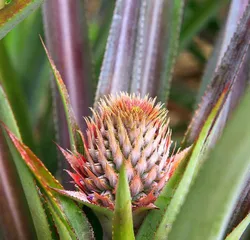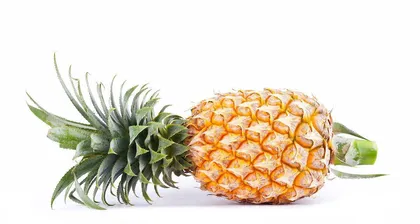Pineapple is a common tropical fruit, beloved for its sweet taste and rich nutritional value. During the cultivation process, the care and management of the pineapple fruiting period are crucial, directly affecting the yield and quality. Therefore, this article will introduce the care and management of the pineapple fruiting period from three aspects: the duration of the fruiting period, management techniques, and precautions.

Introduction to the Fruiting Period
In the process of growing pineapples, the fruiting period refers to the entire process from when the flowers start to bloom until the fruit is mature. Typically, the pineapple fruiting period lasts for about 7-8 months, though it may vary slightly depending on the variety.
Temperature Control
Temperature is a significant factor affecting the pineapple fruiting period; both excessively high and low temperatures can adversely affect fruit ripening. Therefore, it is important to control the temperature during the care and management of the fruiting period. During the summer, if temperatures are too high, methods such as spraying water and increasing ventilation can be used for cooling. In the winter, if temperatures are too low, it is necessary to keep the plants warm, which can be achieved by using covers.

Enhancing Nutrient Supply
During the fruiting period, nutrient supply is key to ensuring the growth and development of the fruit. Therefore, it is necessary to strengthen soil management and promptly supplement various nutrient elements. Additionally, operations like foliar spraying can be performed in moderation to promote fruit development.
Water Control
Water is one of the essential conditions for fruit growth and development, but during the fruiting period, it is important to control the water supply. On one hand, excessive water can lead to problems like fruit rot and mold. On the other hand, insufficient water can cause issues such as fruit shriveling and slow growth.
Timely Pest and Disease Control
During the fruiting period, pests and diseases are common issues that can easily occur. Therefore, during the care and management process, it is necessary to promptly detect and handle various pests and diseases, for example, by using pesticides and cleaning the leaves.

Pruning at the Right Time
Pruning at the appropriate time is an important part of pineapple care and management during the fruiting period. Pruning can promote the growth and overall shape of the plant, and it can also improve the quality and yield of the fruit.
Pay Attention to Disease Prevention and Control
During the care and management of the fruiting period, special attention must be paid to disease prevention and control. For common diseases like pineapple heart rot and pineapple leaf spot, it is necessary to prevent and treat them by strengthening soil management and regularly cleaning the leaves.
Mastering the Fruit Ripening Time
Mastering the time of fruit ripening is an important step in the care and management of the fruiting period. By observing aspects of the fruit such as its color, texture, and taste, one can determine if it is ripe and carry out timely harvesting.
Increasing Ventilation
During high-temperature seasons, appropriately increasing ventilation is an effective way to lower the temperature. This can be done by opening greenhouse doors and windows or by adding ventilation equipment.
Maintaining Appropriate Humidity
Appropriate humidity is one of the important conditions for fruit growth and development. During the care and management of the fruiting period, it is necessary to maintain suitable humidity. This can be achieved by increasing the water supply and maintaining air humidity.
Regular Fertilization
During the care and management of the fruiting period, regular fertilization is also an essential part of the process. Depending on the soil condition and the plant's needs, appropriate fertilization operations with different types of fertilizer can be carried out.
Fruit Protection
After the fruit ripens, it is important to protect it to avoid damage or spoilage. This can be done by using appropriate packaging and storage methods.
Controlling Irrigation Amount
Controlling the amount of irrigation water is also very important during the fruiting period. Excessive irrigation can lead to hypoxia and disease problems in the plant's root system, while too little irrigation will result in poor growth and development of the fruit.
Increasing Light Exposure
Light is one of the important conditions for fruit growth and development. During the care and management of the fruiting period, it is necessary to increase light exposure. This can be done by increasing natural light or by adding artificial lighting equipment.
Through the introduction of pineapple fruiting period care and management, we can see that it involves multiple aspects, including temperature, nutrient supply, pest and disease control, etc. Only by doing a good job in these areas can the quality and yield of the fruit be guaranteed.